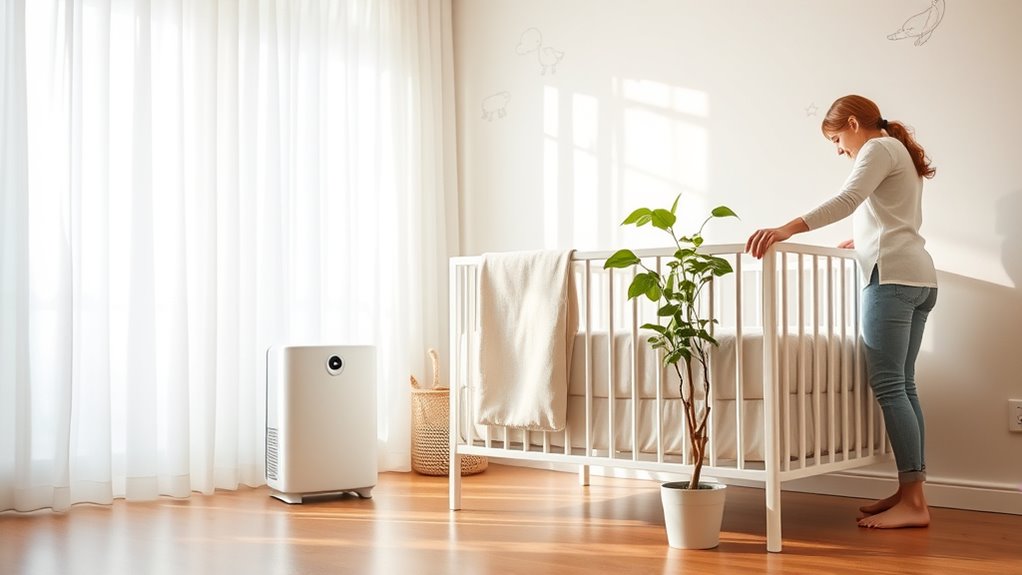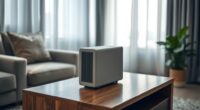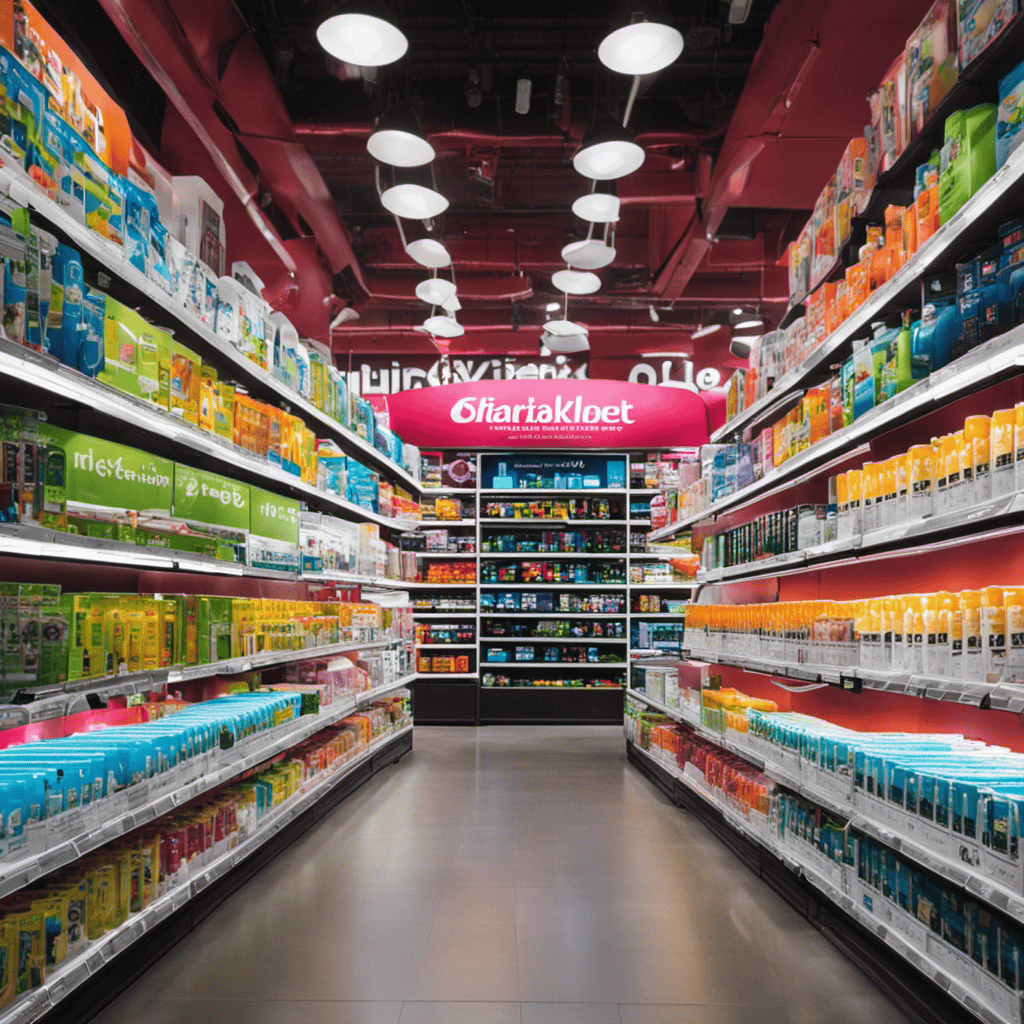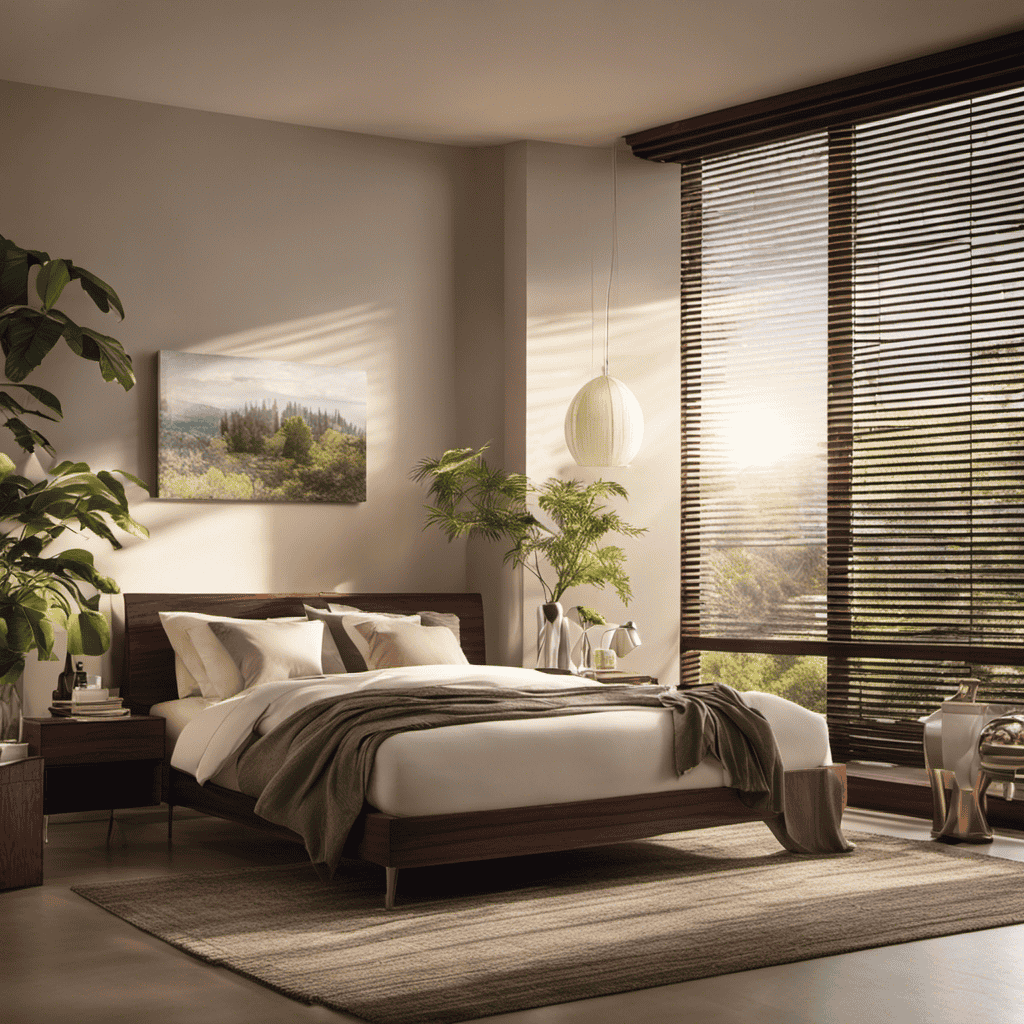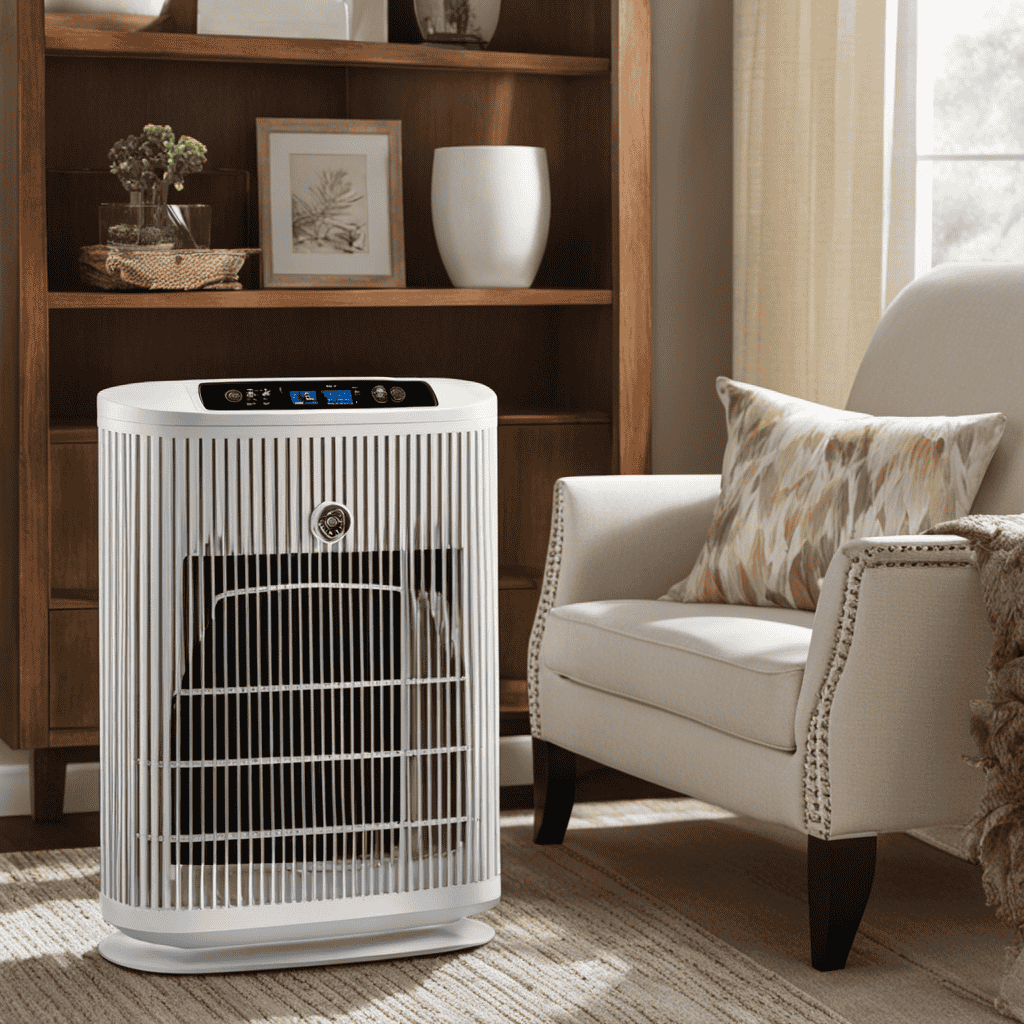Parents swear by a simple, effective air-quality hack for nurseries: combine the use of high-quality air purifiers with natural indoor plants. Air purifiers with HEPA filters remove dust and allergens, while plants like snake plants and pothos absorb toxins and improve air freshness naturally. This duo creates a safer, healthier space for your baby and helps maintain ideal air quality effortlessly. Keep going to discover more tips to create the perfect nursery environment.
Key Takeaways
- Combining air purifiers with HEPA filters and natural plants creates an effective, dual-layer air purification system for nurseries.
- Proper placement of air purifiers and regular plant maintenance ensure optimal air quality and safety.
- Using non-toxic, baby-safe plants like snake plants and peace lilies naturally reduces airborne toxins.
- Consistent ventilation and minimizing indoor pollutants enhance the overall air quality in the nursery.
- Parents swear by this simple, natural hack to create a healthier, cleaner environment for their babies.
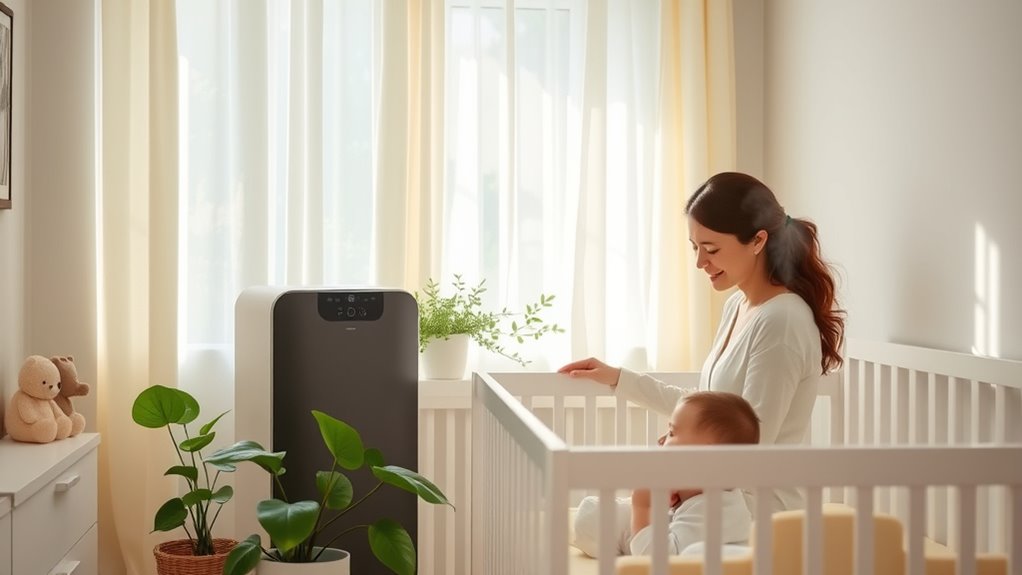
Creating a healthy environment for your baby starts with guaranteeing the air in their nursery is clean and fresh. You want to do everything possible to reduce pollutants, allergens, and irritants that could compromise their health. One of the most effective ways to do this is by using air purifiers. These devices are designed to remove dust, pet dander, mold spores, and other airborne contaminants that can linger in indoor spaces. When selecting an air purifier, look for models with HEPA filters, as they are proven to trap tiny particles that can affect your baby’s respiratory system. Keep the purifier running continuously, especially in the nursery, to maintain ideal air quality. Proper placement of the device is also key—position it away from walls and vents to ensure maximum circulation and filtration. Understanding air quality is essential for making informed choices about your nursery environment.
In addition to air purifiers, natural plants can be a valuable, aesthetic addition to your nursery environment. Certain indoor plants are known for their ability to filter airborne toxins and improve overall air quality. Plants like snake plants, pothos, and peace lilies not only add a touch of nature but also help absorb chemicals from household items like paints, cleaning supplies, and furniture. Just make sure to choose non-toxic varieties safe for children, and avoid overwatering, which can lead to mold growth. Incorporating natural plants provides a dual benefit: purifying the air naturally and creating a calming, inviting space for your baby. Regularly dust and clean the leaves to prevent mold and bacteria buildup, ensuring they continue to serve as healthy air purifiers.
Combining the use of air purifiers with natural plants creates a synergistic effect, greatly improving the air quality in your baby’s nursery. It’s a straightforward, effective hack that many parents swear by for creating a safer, healthier environment. Remember to maintain good ventilation by opening windows when weather permits, and reduce sources of indoor pollutants, such as smoking indoors or using heavily scented cleaning products. Consistency is key—making these practices part of your routine ensures your nursery remains a safe haven for your little one. By taking these simple steps, you’re actively safeguarding your baby’s respiratory health and fostering a space where they can breathe easily and grow comfortably.
Frequently Asked Questions
How Often Should I Change the Air Purifier Filters in the Nursery?
You should check your air purifier’s filter replacement schedule regularly, usually every 3 to 6 months, depending on usage and filter type. Follow the manufacturer’s maintenance schedule to keep the purifier running efficiently. If you notice reduced airflow or odors, it’s time for a filter change. Proper maintenance guarantees your baby’s nursery stays clean and safe, giving you peace of mind.
Is It Safe to Use Air Fresheners Alongside This Air-Quality Hack?
You’re wondering if it’s safe to use air fresheners alongside the air-quality hack. The truth is, air freshener safety varies—many contain chemicals that can irritate your baby’s sensitive lungs. Instead, try alternative fragrances like natural essential oils, but use them sparingly and guarantee proper ventilation. Always prioritize safety, and consult your pediatrician before introducing any new scents. Keep your nursery fresh and safe with mindful choices.
Can This Method Help With Common Nursery Allergies or Colds?
This method can help reduce nursery allergens and ease colds if you stay consistent with air purifier maintenance. Regularly changing filters and cleaning vents improve allergy relief techniques, clearing dust, pet dander, and other irritants. While it won’t cure colds, cleaner air can lessen symptoms and create a healthier environment for your baby. Combine this with good hygiene and allergy management to make a noticeable difference in your nursery’s air quality.
What Are the Cost Implications of Maintaining This Air-Quality System?
When considering an air-quality system, you’ll want to evaluate the cost comparison and maintenance expenses. These systems can have upfront costs for purchase and installation, but maintenance expenses like filter replacements and regular check-ups are ongoing. Typically, you’ll spend more initially, but maintenance is manageable with routine upkeep. Understanding these costs helps you budget effectively and ensures your baby’s nursery stays safe and healthy without unexpected expenses.
Does the Hack Work Equally Well in Different Room Sizes?
You’ll find that the effectiveness of this air-quality hack depends on room size and purifier efficiency. In smaller rooms, the purifier quickly filters the air, maintaining a fresh environment for your baby. However, in larger spaces, you might need a more powerful or additional units to keep the air clean. Always choose a purifier rated for your room size to guarantee ideal air quality and safety for your little one.
Conclusion
So, don’t dismiss this simple air-quality hack just because it sounds too easy. Many parents worry about the effectiveness, but real results speak for themselves. By regularly using an air purifier and keeping the nursery ventilated, you create a healthier space for your baby. It’s a small step that makes a big difference. Trust me, your little one will breathe easier and sleep better, giving you peace of mind every night.
